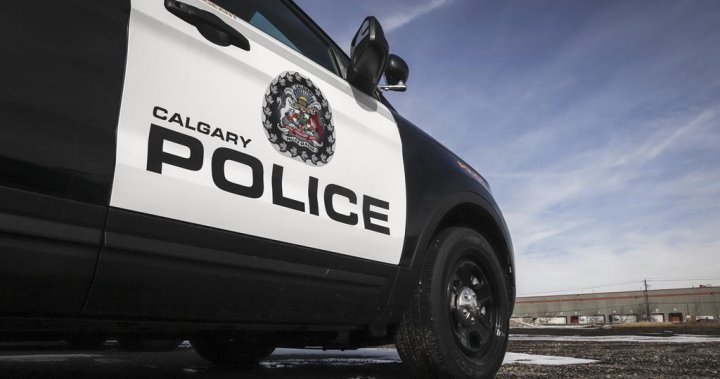Twenty-five new Community Engagement Response Team (CERT) officers are on Calgary streets in a continued effort to address social disorder in the city.
The Calgary Police Service (CPS) team launched in April focusing on transit lines and high system users. Data shows the presence of the officers is working, with transit related social disorder calls from the public down 42 per cent.
The hope is to take a proactive approach, working alongside social service agencies to connect people with services and supports available for those experiencing homelessness and addiction.
“Once we’re sure there’s not criminality involved (in the call), the clinicians are able to step in and talk about their addiction or mental health issue,” explains Superintendent Scott Boyd with CPS.
Officers are assigned a district to allow them to build relationships with the high system users in that area, but there are a higher number of patrols on transit.
“Those kinds of crimes, social disorder elements can be tracked on a hotspot map in accordance with CTrain lines,” says Supt. Boyd.
Boyd says the Chinook area is an example of where the program is working. It’s not a tradition spot for social disorder like the downtown core, but it has become a hotbed for crime.
Since April, CPS has been able to deploy CERT officers and has seen a reduction in both calls from the public and an increase in officer calls for service, cutting back on the average of 14 social disorder calls Calgary police receive each day.
“If we can get to them, get them into a social agency or Alberta Health Services, or another resource, that’s a big difference in our day to day calls for service for us and I’m certain all of our partners,” said Supt. Boyd.
CERT officers can issue bylaw tickets, and some are involved in dismantling encampments to identify criminal offences like drugs or weapons. But the goal is to work proactively, finding ways to change behaviour and using tickets as a last resort.
Get breaking National news
For news impacting Canada and around the world, sign up for breaking news alerts delivered directly to you when they happen.
“We’re looking to get people the resources they need in the moment they’re ready to accept it to stop the behaviour, whether it’s the social disorder or encampment,” says Supt. Boyd.
Alpha House in downtown Calgary provides outreach for people experiencing homelessness, mental health issues and addiction. While they don’t partner specifically with CERT, being able to work in collaboration with the police has improved their services.
“A big part of responding to public calls for concern is understanding what their actual concern is,” explains Shaundra Bruvall with Alpha House. “Is it you want us to do a welfare check? Is it that you are fearing for your safety? Things like that help us better understand if yes, this is a police call or if it’s better served by a social service response.”
Bruvall says there has been an increase in complexity in mental health calls with more behavioural challenges. While that doesn’t necessarily change the response, it does change the complexity of managing the public’s response and ensuring everyone can be safe on the street.
“It’s really making sure people understand what’s happening in this situation so they aren’t using fear-based reactions to overwhelm them,” says Bruvall.
The increase in complexity is something noticed by the Calgary Homeless Foundation (CHF) as well. As the weather cools, CHF is once again launching its Coordinated Community Extreme Weather Response to support Calgarians experiencing homelessness through the winter.
Last year the program set up warming centres to provide an alternative to transit stations to warm up and charge cell phones.
There were 27,000 visits to the centres, 2,500 transports to the warming stations and 2,600 individuals reached through the program, numbers the Calgary Homeless Foundation hopes to build upon this year.
“This is the most coordinated I’ve ever seen our city respond,” says Bo Masterson with the Calgary Homeless Foundation. “Not only to the cold weather but to the situation of homelessness… We know shelters are not the best place that people want to end up, we know it’s not the most desirable, and at the same time we know it’s a last choice solution to warm up.”
© 2024 Global News, a division of Corus Entertainment Inc.
25 new officers as Calgary police expands Community Engagement Response Team


